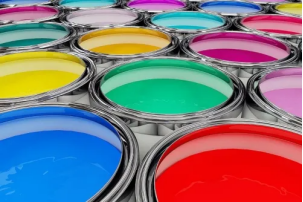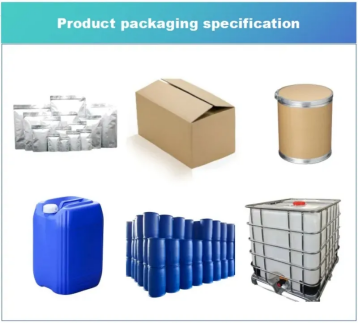Overview of PEG Polyethylene Glycol
PEG Polyethylene glycol with lower relative molecular weight (PEG200~600) has solubilization, solubilization, moisture retention, heat carrier performance. Relatively high molecular weight is commonly used as matrix, play a role in regulating viscosity, melting point, stability system.PEG Polyethylene glycol is an addition polymer with water. Those with a molecular weight below 700 are colorless, odorless, non-volatile, viscous liquids at 20°C, and are slightly hygroscopic. Those with molecular weights between 700 and 900 are semi-solid. Those with a molecular weight of 1,000 and above are light white waxy solids or flake-like paraffin wax or fluid powder. Miscible in water, soluble in many organic solvents, such as alcohols, ketones, chloroform, glycerides and aromatic hydrocarbons; insoluble in most aliphatic hydrocarbons and ether. As the molecular weight increases, its water solubility, vapor pressure, water absorption and solubility in organic solvents decrease accordingly, while the freezing point, relative density, flash point and viscosity increase accordingly.
Product Performance of PEG Polyethylene Glycol
Oxidized polyethylene has high chemical stability and can resist corrosion by oxygen, acid, alkali and other chemical substances.
Oxidized polyethylene is a solid, colorless or yellowish powder or granule commonly used in coatings, adhesives and plastic additives.
Flame retardancy: Oxidized polyethylene has good flame retardant properties and can effectively reduce the occurrence of fire accidents.
Chemical Properties of PEG Polyethylene Glycol
Density: 0,88 g/cm3
Density: 1.27g/mL at 25°C
Melting point: 64-66°C
Boiling point: >250°C
Flash point: 270 °C
Water solubility: Soluble in water.
Vapor pressure: <0.01 mm Hg (20 °C)
Vapor density: >1 (vs air)
Solubility: H2O: 50mg/ml, clear, colorless
Refractive index: n20/D 1.469
PH value: 5.5-7.0 (25℃, 50mg/mL in H2O)
Storage conditions: 2-8°C
Stability: Stable. Incompatible with strong oxidizing agents.
Sensitivity: Hygroscopic
Appearance: waxy solid
Specific gravity: 1.128
Color: White to very pale yellow
Technical Parameter of PEG Polyethylene Glycol
Appearance(25℃) | Hydroxyl value (mgKOH/g) | Freezing point (℃) | |
PEG-200 | Transparent liquid | 510-625 | - |
PEG-300 | 340-416 | - | |
PEG-400 | 255-312 | 4-10 | |
PEG-600 | 170-208 | 20-25 | |
PEG-800 | White cream | 127-156 | 26-32 |
PEG-1000 | 102-125 | 38-41 | |
PEG-1500 | White solid | 68-83 | 43-46 |
PEG-2000 | White flake | 51-63 | 48-50 |
PEG-3000 | 34-42 | 51-53 | |
PEG-4000 | 26-32 | 53-54 | |
PEG-6000 | 17.5-20 | 54-60 | |
PEG-8000 | 12-16 | 55-63 | |
PEG-10000 | 10.6-11.8 | 60-65 | |
PEG-2000 | 5-6.2 | 63-68 |
Application of PEG Polyethylene Glycol
PEG Polyethylene glycol is a colorless viscous liquid or white solid.Soluble in water and many organic solvents, easily soluble in aromatic hydrocarbons, and slightly soluble in aliphatic hydrocarbons.Certain metal salts are soluble in PEG Polyethylene glycol at approximately 100°C and remain stable at room temperature. These metal salts include calcium, cobalt, copper, iron, magnesium, manganese, tin and zinc chlorides, potassium iodide and ethyl mercury. It can be used as plasticizer, softener, wetting agent, lubricant, solvent, adhesive, and can also be used to prepare spices and pharmaceutical preparations.

Application of PEG Polyethylene Glycol
Coatings and adhesives: PEG Polyethylene glycol can be used to prepare coatings and adhesives with good heat resistance and weather resistance, and is commonly used in automotive coatings, ship coatings and other fields.
Rubber and plastic additives: PEG Polyethylene glycol, as an important additive, is often used to improve the thermal stability and anti-aging properties of plastics and rubber.
Textile treatment agent: PEG Polyethylene glycol can be used in the twisting, processing and refining of textiles to improve the softness and washability of textiles.

NANOTRUN(www.rboschco.com) is a trusted global chemical material supplier & manufacturer with over 12-year-experience in providing super high-quality chemicals and nanomaterials, including boride powder, nitride powder, graphite powder, sulfide powder, 3D printing powder, etc.
The company has a professional technical department and Quality Supervision Department, a well-equipped laboratory, and equipped with advanced testing equipment and after-sales customer service center.
If you are looking for high-quality PEG Polyethylene Glycol, please feel free to contact us or click on the needed products to send an inquiry.

Packing of PEG Polyethylene Glycol
1kg/bottle, 25kg/barrel, or 200kg/ barrel.
We have many different kinds of packing which depend on the quantity.

Payment Methods of PEG Polyethylene Glycol
L/C, T/T, Western Union, Paypal, Credit Card etc.
Shipment of PEG Polyethylene Glycol
By sea, by air, by express as soon as possible once payment receipt
Q1
Are PEGs safe?
Answer: PEG is safe under certain conditions, but the specific safety depends on factors such as its molecular weight, use and exposure. In the field of medicine and cosmetics, PEG usually undergoes strict safety evaluation and is used at appropriate concentrations and uses.
Q2
How does the molecular weight of PEG affect its properties?
Answer: The molecular weight of PEG has an important impact on its properties. The larger the molecular weight, the higher the viscosity, melting point and crystallinity of PEG, while the solubility decreases. PEGs of different molecular weights have different application characteristics, and the appropriate molecular weight can be selected according to specific needs.
Q3
Is PEG degradable?
Answer: PEG can be degraded under certain conditions, but its degradation rate is slow. The degradation of PEG mainly proceeds through hydrolysis reaction, and the degradation product is ethylene glycol. However, the biodegradation rate of PEG is affected by many factors, such as molecular weight, structure, environmental conditions, etc.
Q4
How is PEG synthesized?
Answer: The synthesis of PEG is mainly carried out through the polycondensation reaction of ethylene glycol. Under the action of the catalyst, a polycondensation reaction occurs between ethylene glycol molecules to generate high molecular weight PEG. In addition, PEG can also be synthesized through other methods such as ring-opening polymerization, esterification reaction, etc.
Q5
What is the difference between PEG and PPG (polypropylene glycol)?
Answer: The main difference between PEG and PPG is their structure and properties. PEG is formed by the condensation polymerization of ethylene glycol and has a linear or branched structure, while PPG is formed by the condensation polymerization of propylene glycol. Due to structural differences, there are certain differences between PEG and PPG in terms of physical properties, chemical properties and uses.
PEG Polyethylene glycol Properties | |
| Other Names | N/A |
| CAS No. | 25322-68-3 |
| Compound Formula | C2nH(2n+2)O(n+1) |
| Molecular Weight | N/A |
| Appearance | Transparent liquid, white cream,white solid, white flake |
| Melting Point | N/A |
| Boiling Point | N/A |
| Density | N/A |
| Solubility in H2O | N/A |
| Exact Mass | N/A |
PEG Polyethylene glycol Health & Safety Information | |
| Signal Word | N/A |
| Hazard Statements | N/A |
| Hazard Codes | N/A |
| Risk Codes | N/A |
| Safety Statements | N/A |
| Transport Information | N/A |




